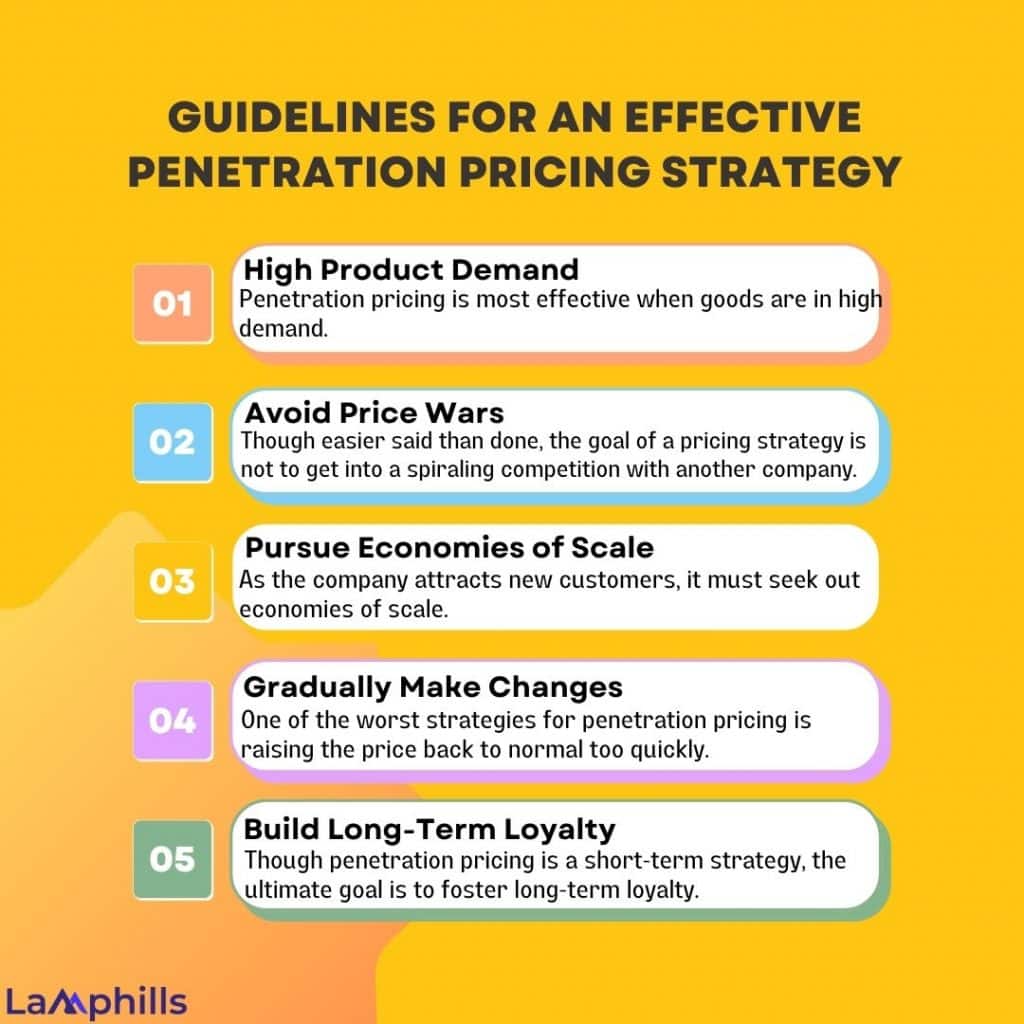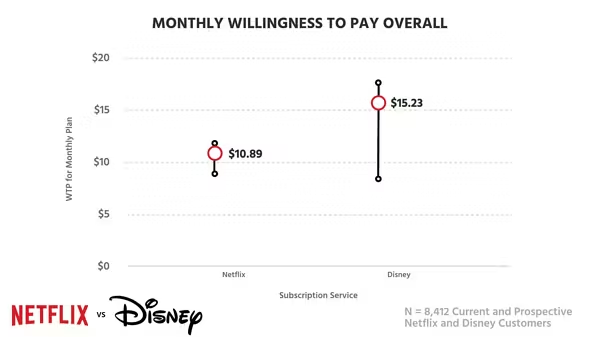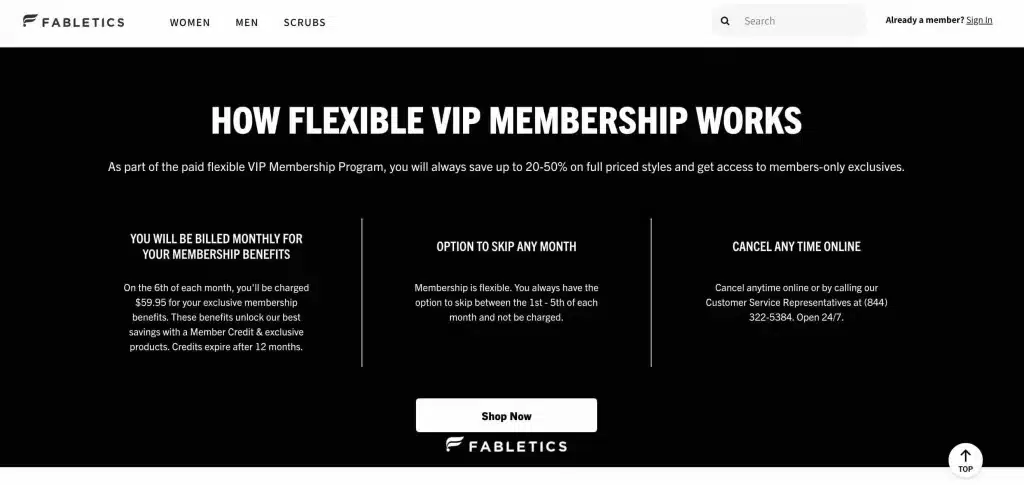Entering a market is no easy task, especially when there’s an established brand whose name recognition and customer base are well established. Going after this market with a new product or service, regardless of whether or not it’s better than what’s currently available, is a Herculean task. However, a penetration pricing strategy can help.
Based on the idea that everyone loves a good deal, penetration pricing helps you gain footing in a new market by competing on price. Offering a significantly lower cost than expected lets you acquire customers faster. However, you’ll also have to work harder to raise prices in the future. In this article, I will explain the term penetration pricing strategy and how it works.
Key Points
- A penetration pricing strategy is a marketing strategy that launches a new product or service at a low introductory price and then raises the price later.
- A penetration pricing strategy prioritizes market share over profits for a given time. The goal is to generate demand, rapidly build a customer base, and maximize brand loyalty in a short time.
- Penetration pricing comes with the risk that new customers may initially choose, but once prices increase, switch to a competitor.
- For a penetration pricing strategy to work, it must often meet the following criteria or adhere to the following guidelines: high product demand, avoid price wars, pursue economies of scale, gradually make changes, and build long-term loyalty.
- Examples of penetration pricing strategies include Netflix, Disney+, Cell Phone Carriers and Smartphones, Fabletics, and Costco.
What Is Penetration Pricing Strategy?
A penetration pricing strategy is a marketing strategy that launches a new product or service at a low introductory price and then raises the price later. The initial price may provide a razor-thin profit margin or even mean you operate at a loss. The goal is to secure enough of the market that customers will stick with your offering once you raise the price to a more sustainable level.
Penetration pricing is similar to economy pricing because both use low prices to attract customers. However, it differs because economy pricing is meant to be permanent, whereas penetration pricing is temporary and may not make any profit. Penetration pricing may also be considered the opposite of price skimming—the strategy of launching with high prices and lowering them over time.
Generally, the penetration pricing strategy is best applied to consumable items or ongoing services. You wouldn’t want to offer a low introductory price on a product that consumers only need to buy once. The strategy relies on customers returning for more once you’ve raised the prices.
Understanding Penetration Pricing Strategy: How It Works

A penetration pricing strategy prioritizes market share over profits for a given time. The goal is to generate demand, rapidly build a customer base, and maximize brand loyalty in a short time.
Penetration pricing occurs when businesses introduce a low price for their new product or service. The initial price undercuts competitors, forcing them to match the offer or quickly apply other strategies. Competitors’ customers may switch to the cheaper offer, and new customers may buy in, too. After a period of growth, the business typically raises prices to increase profits and reflect the product’s rising value.
If it’s an innovative product, this theory works the same way. Price is removed as a barrier to get people to try the new product or service. The company sets a price that’s a bargain for its unique value while still being cheaper than the familiar options. Competitors have less time to respond before the company amasses market share and becomes the new standard of choice.
Penetration pricing is generally used when high demand for a new product or service is projected. The hope is that the sales volume will make up for the below-average cost.
Price elasticity also plays a role. Businesses selling price-elastic products — meaning their customers’ buying habits shift based on price — also use the penetration pricing strategy. High prices could hurt sales and limit growth during the crucial launch period. A low price is a foot in the door for many new businesses.
Guidelines for an Effective Penetration Pricing Strategy

Penetration pricing is the first step in a long-term plan to attract, convert, and establish relationships with new customers. For a penetration pricing strategy to work, it must often meet the following criteria or adhere to the following guidelines.
##1. High Product Demand
Penetration pricing is most effective when goods are in high demand. If there is not a large market for a product, the price of the good is often less important because there are fewer consumers to capitalize on and attempt to retain. Therefore, the most successful penetration pricing strategies rely on broader markets with more exposure, where a single penetration pricing strategy can have the greatest effect.
#2. Avoid Price Wars
Though easier said than done, the goal of a pricing strategy is not to get into a spiraling competition with another company. The purpose of penetration pricing is not simply to offer a very low price but to take market share most effectively. Price wars can be expensive and ineffective and may publicly damage a company’s reputation should the battle evolve ineffectively.
#3. Pursue Economies of Scale
As the company attracts new customers, it must seek out economies of scale. With more customers, the company should be able to use resources, obtain pricing, and scale operations more efficiently. For example, consider a company ordering raw materials for inventory. With more customers and orders, the company should be able to purchase larger quantities and reduce its cost per unit produced.
#4. Gradually Make Changes
One of the worst strategies for penetration pricing is raising the price back to normal too quickly. Not only does this open the door for a competitor to swoop in and employ their penetration pricing strategy, but quickly making changes breaks customer trust. With the customer on board with the new company, it must slowly make changes and gradually raise prices to more profitable levels, or it will risk losing its long-term value.
#5. Build Long-Term Loyalty
Though penetration pricing is a short-term strategy, the ultimate goal is to foster long-term loyalty. That means honoring existing pricing where applicable, understanding limitations on what can be offered, and emphasizing value in product quality and customer service. Many telecom companies offer sign-up bonuses or one-time incentives to switch providers, so they are responsible for fostering the business relationship.
Using Penetration Pricing Strategy Successfully
Penetration pricing shares some similarities with freemium pricing as an acquisition method. However, it’s not sustainable for long-term revenue growth to attract customers solely based on price.
You’re a new SaaS tool for project managers entering a market with powerhouses like Atlassian, Trello, and Asana. While you know that your product is amazing and offers more value than your competitors, consumers in the market don’t. So, you decide to use a penetration pricing strategy to enter the market.
In this situation, it makes sense for your base tier to be free to match up with your competition. However, your basic and premium packages will need to be priced differently. Using a penetration pricing strategy, you would structure these tiers so that the per-user price is at the bottom of customer willingness to pay. That helps you get more customers on paid tiers in your service.
Once you start acquiring these customers, you’ll nurture them through onboarding and educational content until, months later, they’re fully ensconced in your service. At this point, you can consider raising the per-user price of your basic and premium packages to match your competitors’ norms.
You’ll also need to consider how to offer upsells and other types of expansion revenue to increase the overall lifetime value (L.T.V.) and average revenue per user (ARPU) of your current customer base. If you’ve built relationships with your customers, they’ll be more willing to accept these price increases.
Check out our penetration pricing strategy formula template guide:
Example of Penetration Pricing Strategy
Companies utilize the penetration pricing strategy in different ways. In addition to setting a low price for their main product, some companies also use discounts, promotions, and other giveaways to attract customers. Here are a few examples.
#1. Netflix

Netflix is a powerful example of using a market penetration pricing strategy to edge out a major competitor. In the late 1990s and 2000s, DVD rentals were becoming mainstream. Although Blockbuster dominated the home entertainment market, it was also associated with late fees and limited selections.
Netflix had a unique proposal. If customers could wait a day or two for their DVDs to arrive, they could access a better movie library without any late fees. From the outset, Netflix emphasized ease and affordability to attract Blockbuster customers.
In 2000, Netflix users could rent four movies at a time with no return-by dates for the $15.95 subscription plan. That put rentals at or below $1 per DVD for regular movie-watchers, where Blockbuster charged about $4.99 for a single three-day rental.
Penetration pricing — an innovative idea — allowed Netflix to build its subscriber base and reach profitability in 2003, five years after opening.
The low initial price point lets customers test their new service and make the switch. 2007, the company’s convenient online streaming service propelled it into the future. Heavy competition from Netflix and Redbox, another new rental company, contributed to Blockbuster’s bankruptcy filing 2010.
#2. Disney+
The streaming entertainment market is one of the most difficult spaces for new companies. Established brands like Netflix and Hulu have serious brand recognition and a loyal customer base. So, when Disney+ decided to launch its streaming platform at the end of 2019, it decided that penetration pricing was its best shot.
As we saw in our Pricing Page Teardown on Netflix and Disney+, Disney’s initial offering of $6.99 is well under its customers’ willingness to pay.

Instead of making people choose which streaming service to use, Disney+ priced itself aggressively low to entice new customers to buy its service while keeping Netflix. If it had priced itself closer to Netflix at launch, it could have increased its average revenue per acquisition (ARPA), but it would not have been able to build its customer base as fast.
It will be interesting to see how this changes in the months to come as Disney+ establishes its place in the market and starts raising prices.
#3. Cell Phone Carriers and Smartphones

Some carriers offer customers inexpensive or free smartphones in return for a long-term contract. Technology companies that are creating phones employ this strategy, too. Android phones are often priced low, so customers build brand loyalty, and Android achieves greater market penetration. Apple, on the other hand, practices price skimming. They charge as high a price as customers will pay and slowly lower it. The initial high cost builds their luxury brand reputation, and they “skim” price-sensitive customers from competitors over time as the product price slowly drops.
#4. Fabletics

This athletic clothing brand offers access to a two-piece outfit valued at around $100 for only $59.95. This is cheaper than other popular athleisure brands like Lululemon or Athleta, which typically sell a single pair of full-length tights starting at around $100.
The hook? Fabletics is a subscription service. You join their V.I.P. program and receive one “member credit” monthly unless you hit the “skip a month” feature before the fifth. This credit can be used to redeem a two-piece outfit.
Prices this low would likely not be sustainable for the brand without the sheer volume of recurring monthly subscription prices and one-off purchases from its members.
#5. Costco
Costco leverages a penetration pricing strategy with its organic grocery products.
Generally speaking, the margin on typical groceries isn’t particularly high — but that’s not true for organic foods with more impressive returns. In turn, many grocers sell their organic products with a high markup.
On the other hand, Costco sells organic foods at lower prices — slightly undercutting the market with its penetration pricing strategy. That said, this is a very specific brand of penetration pricing that not every company can sustainably employ. Since the corporation is as massive as it is, it has more leeway to use this strategy than a smaller, growing grocer.
What Are the Advantages and Disadvantages of the Penetration Pricing Strategy?
When used wisely, the penetration pricing strategy offers numerous advantages. But, there are some possible dangers you should stay away from. In light of this, I’ve kept this section of my article simple to focus on the benefits and drawbacks of the penetration pricing strategy.
Advantages
Penetration pricing strategy has helped to produce some of the world’s biggest brand success stories. Here are the main benefits of penetration pricing.
#1. Encourage New Customers to Try Your Product or Service
A penetration pricing strategy can help encourage new customers to buy your product or service. These people were typically interested in that area but not convinced enough to pay the regular price. Offering them a discount reduces their risk. It makes it easier for them to justify trying it out.
#2. Build Relationships With Key Partners
Brands that generate high sales are very popular with their key partners, such as wholesalers and retailers. Penetration pricing can allow you to build strong relationships with them, too.
#3. Become a Market Leader
The benefits of being a market leader go way beyond having a sizable market share. You become one of the driving forces in your sector and gain high credibility and trust.
#4. Start to Build Brand Loyalty
The penetration pricing strategy itself will not build brand loyalty. However, it will potentially allow you to start building customer relationships, which is the starting point for true brand loyalty.
#5. Limit Competition
Penetration pricing strategy can help deter competitors from entering the market during the promotional period. It may even encourage some of your established competitors to leave the market.
#6. Benefit From Economies of Scale
With a penetration pricing strategy, you generally aim to have a high inventory (in expectation of a high inventory turnover). This means you can potentially benefit from economies of scale.
Disadvantages
Penetration pricing is not a guarantee of success. It has several potential disadvantages. Fortunately, an effective penetration pricing strategy can manage all of these.
#1. Can Be a Relatively High Risk
Anything that requires a significant upfront investment in the hope of longer-term profits is a relatively high-risk strategy. While this reality cannot be avoided, it can be mitigated carefully.
Be very careful not to overstretch yourself. Remember that penetration pricing strategies work best when supported by great marketing. They also require you to deliver on customer experience.
#2. Can Set Unrealistic Pricing Expectations
Modern customers are used to seeing businesses find ways to extend purportedly special offers indefinitely. This, of course, leads to them ceasing to be special. Some customers may assume that your promotional price is your regular price (or very close to it).
To mitigate this risk, communicate the time-limited aspect very clearly. Then, you must stick to it. Only extend the promotion if there is a compelling reason to do so. This factor, such as adverse weather leading to supply-side disruptions, should be outside your control. Once you set the new date, you must stick to it.
#3. Can Create the Impression That You Are a Low-Quality Brand
Most customers are well aware that there is generally a strong link between quality and price. Even with a penetration pricing strategy, setting your price too low may scare consumers. To mitigate this risk, keep your price high enough to be credible. You also need to be very clear that it is a short-term promotion.
#4. Can Lead to Poor Customer Experiences and, Hence, Negative Publicity
You’ll have to compromise elsewhere if you allocate too many resources supporting penetration pricing. This could lead to a poor customer experience and negative publicity, potentially undoing all the benefits your penetration pricing strategy could have achieved.
To mitigate this risk, be very careful to avoid overstretching yourself. Think about what high demand will mean for your business overall. Make sure that you can still deliver excellent customer service.
#5. Less Customer Loyalty
Penetration pricing strategy includes the risk of dealing with frequent customer turnover and growing a core customer base of “switchers.” These are customers who switch to bargains and leave once prices increase. Businesses need to announce and implement price raises carefully to avoid this outcome.
#6. Aggressive Competition
While penetration pricing may catch other market players off guard, it could cause them to lower their prices. Competing with established businesses for market share in a “price war” could be challenging for a new venture.
What Is the Difference Between Skimming and Penetration Strategy?
As previously discussed, Android uses penetration pricing to win new customers and create loyalty to the brand. One of its primary competitors, Apple, uses a skimming pricing strategy.
Will Kenton, Investopedia blog contributor, writes:
“A skimming strategy works well for innovative or luxury products where early adopters have low price sensitivity and are willing to pay higher prices. Effectively, producers are skimming the market to maximize profits. Over time, prices will reduce to levels comparable to market prices in order to capture the rest of the market. Small businesses or those in niche markets can benefit from price skimming when their products or services are differentiated from competitors’ and when synonymous with quality and a positive brand image.”
While penetration pricing casts a wide net for an immediate appeal to as large a portion of a target market as possible, price skimming focuses on engaging a small, exclusive segment by offering high-cost products or services.
Penetration Pricing Participants

There are three primary users of penetration pricing, each of which is discussed below.
#1. New Companies
Most often, penetration pricing is used by new competitors entering a market for the first time. These companies do not have an existing presence in the market and are often unknown or may be young. They may have limited resources, so they may be unable to deploy capital for aggressive marketing campaigns. The ultimate goal of these new companies is to steal market share from market leaders.
#2. Established Brands Offering New Products
In other cases, more established companies may introduce new products. Although the brand name may be recognized and known, the company may not be known for some specific products. Because the company may have a large stockpile of resources, it often can sacrifice short-term profits to establish itself in a new market.
#3. Price-Elastic Brands
Last, some companies may use penetration pricing for items with high price elasticity. Price elasticity is the relationship between demand and price for goods; if a small price change creates a large change in demand, the price is highly elastic. In these cases, a company may slightly reduce its price to achieve the benefits of price elasticity.
Is Penetration Pricing Ethical?
Yes, penetration pricing is a valid strategy to offer lower prices to temporarily attract customers. There is nothing unethical or illegal about it, though there are very strong considerations a company must make once a customer has been attracted. For example, once a new customer has agreed to a long-term contract, the company must honor that agreement even if it is unprofitable and not “bait and switch” the customer.
Penetration Pricing vs. Loss Leader Pricing vs. Predatory Pricing
A few pricing strategies sound similar to penetration pricing but have important differences. Here’s a look at each.
- Penetration pricing: With this pricing strategy, a business sets a low price on a new product or service to gain market share quickly. The business plans to increase prices in the future, often setting a time limit on the introductory rate.
- Loss leader pricing: Loss leader pricing is a slightly different marketing strategy and is illegal in half of U.S. states. Companies sell a product or service at a loss — or narrow margin — to attract more customers. In theory, customers buy these “loss leaders” and then spend the savings on the company’s other, more profitably priced goods.
- Predatory pricing: Predatory pricing is illegal in the U.S. A firm practicing predatory pricing lowers costs dramatically to drive competitors out of the market. Unchecked or unregulated, the firm attains a monopoly. Then, the firm raises prices above market levels to recoup losses and maintain its position. Predatory pricing removes the possibility of healthy competition and doesn’t benefit consumers.
When choosing your pricing strategy, be sure to take any legal considerations into account.
Bottom Line
In conclusion, penetration pricing is a tricky strategy for subscription and SaaS companies. To pull it off, you’ll need to quickly build loyalty in your customer base and establish strong relationships before increasing your price.
If there is an established brand in the market you want to enter, choosing this method can potentially get your metaphorical foot in the door, but the work required to gain back the revenue lost through these lower prices takes a lot more time.
Similar Articles
- The Secret Vertical Marketing System for Hyper-Focused Growth
- Dynamic Pricing Strategy: How Top Companies Use It to Their Advantage
- PENETRATION PRICING POLICY: HOW YOU CAN GAIN MARKET ENTRY
- Pricing Strategies: Top 7 Examples of Pricing Strategies
- Premium Pricing Strategy: Overview & Detailed Example






